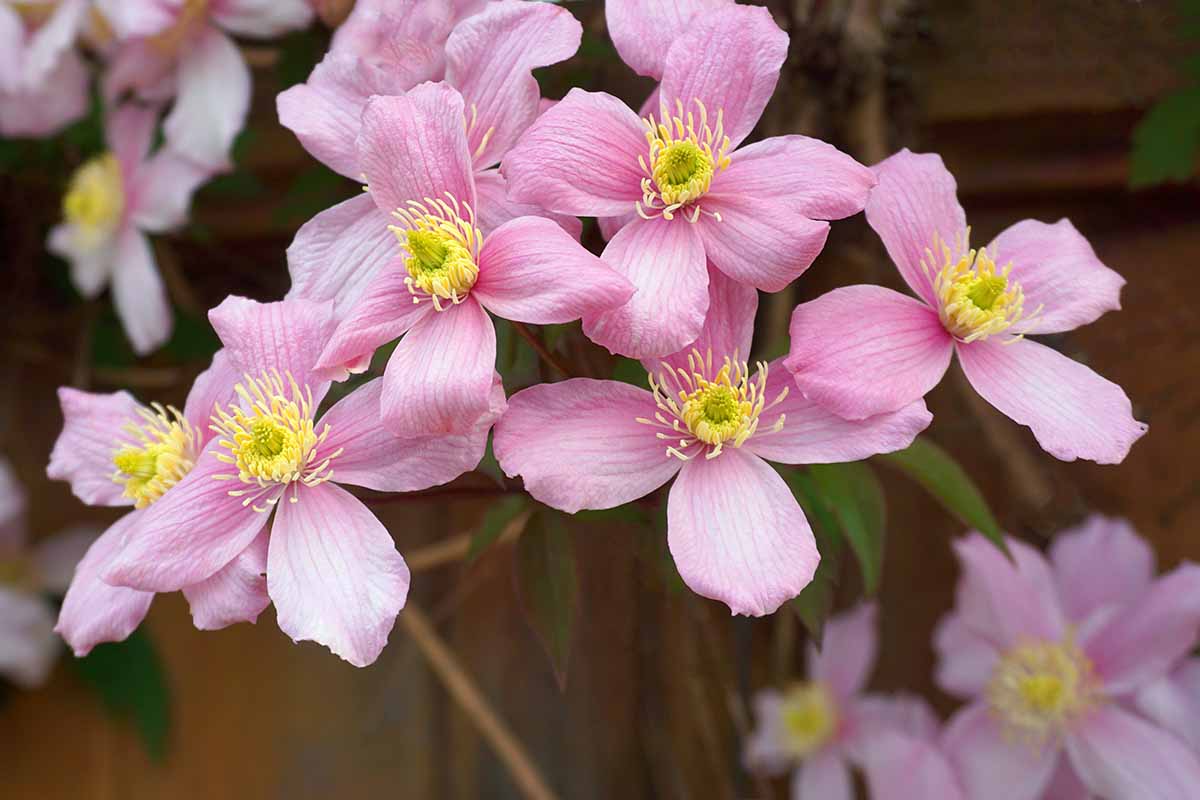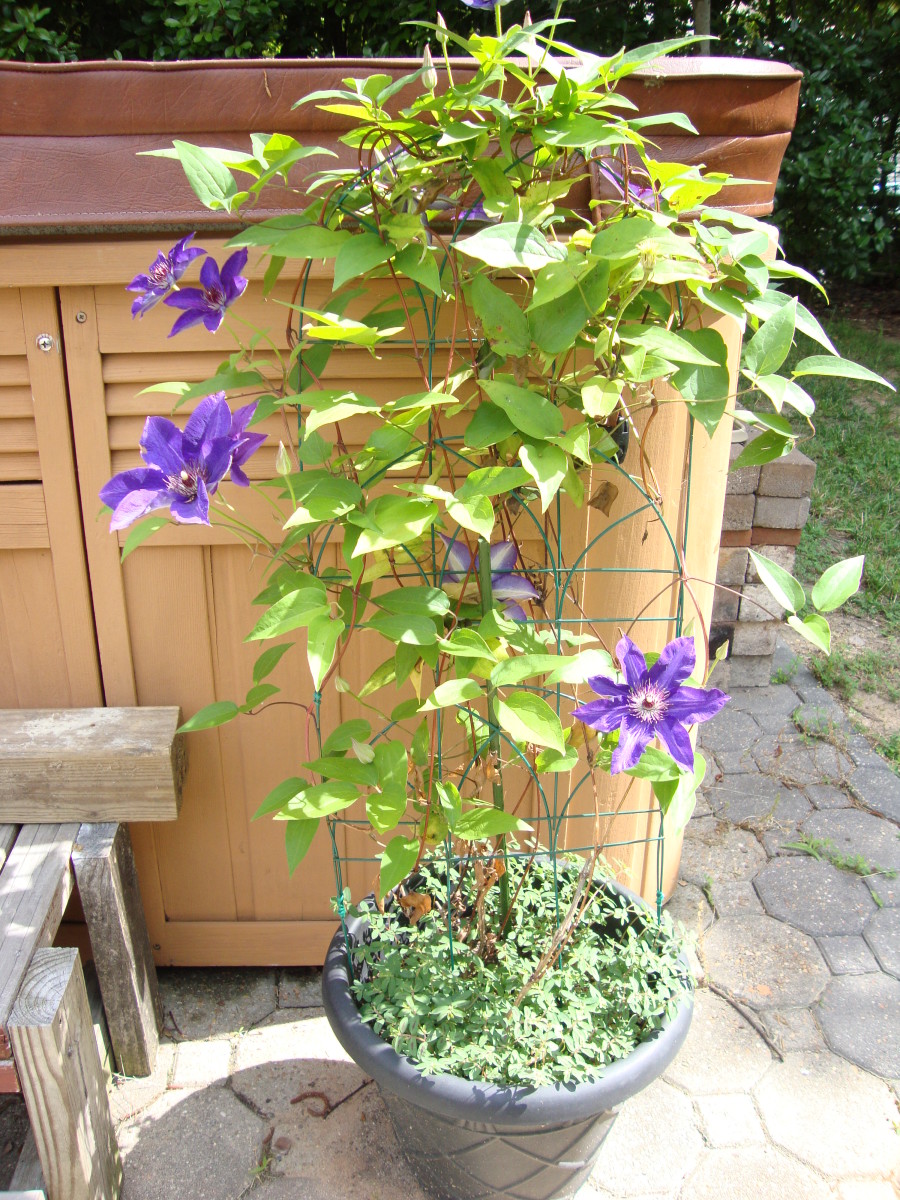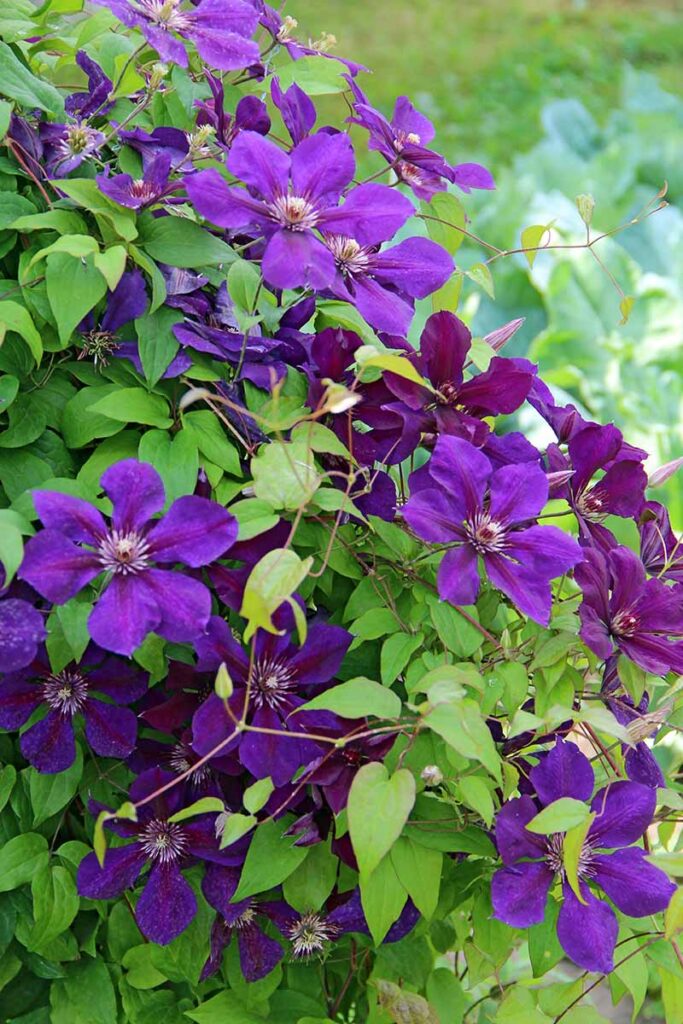
Guide To Clematis Transplanting Tips On Replanting A Clematis Vine
Generally, like evergreens, you shouldn't plant or transplant clematis any later than October 1. Clematis Transplanting When replanting a clematis vine, dig the hole it will be going in. Make sure it's wide and deep enough to accommodate all the roots you can get.

How to divide and transplant clematis. I'm planning to move some
Clematis can be transplanted from late fall to early spring before new growth emerges, according to Ohio State University. There are several benefits to transplanting during cool weather when the plant is dormant. First, the plant will experience less transplant shock during cool weather, as opposed to hot weather.

Transplanting Clematis In Spring Växtia » Clematis montana 'Fragrant
Clematis Transplanting. When replanting a clematis vine, dig the hole it will be going in. Make sure it's wide and deep enough to accommodate all the roots you can get. Break up the dirt that you'll be refilling the hole with and mix in some organic material, like worm castings or sphagnum peat moss. You can also mix in some garden lime, if.

Transplanted clematis is doing well! Clematis, Plants, Transplant
Do you have any clematis that is root-bound and needs to be transplanted?Watch 👀 today's video to see how transplanting clematis can be super easy!Definitel.

Transplanting clematis YouTube
Transplanting Clematis A well-established clematis plant will have an extensive root system that will be larger than you expect. Plant roots can reach as much as 4 feet under ground. It is important to avoid damaging the roots as much as possible because most of the plant's energy is in the root system during the dormancy period.

When and How you can Transplant Clematis (Important Ideas) My Blog
Clematis Transplanting. When replanting a clematis vine, dig the hole it will be going in. Make sure it's wide and deep enough to accommodate all the roots you can get. Break up the dirt that you'll be refilling the hole with and mix in some organic material, like worm castings or sphagnum peat moss.

How to Grow Clematis from Cuttings Empress of Dirt
The best time to transplant clematis is in the early spring or the winter months. Choosing a time when your plant is dormant will cause less stress on the root system. You should follow these steps when replanting your clematis: Prepare the location. Your soil should be slightly alkaline and moist. Dig a hole that is wide and deep.

Transplanting & Caring For Clematis Roots Urban Garden Gal
Step 1: Prepare the New Location Before transplanting your clematis plant, you should prepare the new location where you will be planting it. Choose a location that has well-draining soil, receives adequate sunlight, and has enough space for the plant's growth. Dig a hole that is slightly larger than the root ball of the clematis plant.

When and How to Transplant Clematis Gardener’s Path
Transplanting a clematis in early spring is ideal because the plant is almost ready to start growing again. This means it'll adapt more quickly to a new location. Transplanting a clematis in the fall allows the plant to reestablish its roots before winter dormancy sets in. Aim to transplant on a cool, overcast day rather than a hot day.

Transplanting Clematis In Spring Växtia » Clematis montana 'Fragrant
Prep the Area Dig Up the Plant Replanting Care If you have a vine that you really adore and you can't move it, or you really don't want to risk losing it, try propagating it via cuttings. That way, if the vine dies after a move, or if it's you that's moved away, you still have a way to keep it.

HowTo Transplant a Clematis YouTube
Place the root system in the wheelbarrow (you may need a buddy to help) and fill the wheelbarrow with water. Let the plant soak, out of direct sunlight, for an hour or so while you rest your back! No, the plant won't drown. Move the clematis in the wheelbarrow to its new home. Aren't you glad you put it in the wheelbarrow?

How and When to Transplant Clematis Plants All About Gardening
The first step is to loosen the soil around your clematis so you can see how deep the roots have spread. You can do this with a fork or garden spade. Next, clear away all of the tangled vegetation and any self-sown seedlings growing in close proximity to the main plant. Take care not to damage the plant.

Clematis Plants and How to Grow Them Successfully Dengarden
Step 1: Choose Your Location Pick a planting location that has enough sun, and plan for a trellis as needed. Choose the location where you would like to transplant your Clematis. Make sure the new location can accommodate the size and growth habits of your Clematis plant.

Transplanting Clematis The Best Times and Techniques Petal Republic
Water the plant. Water the plant thoroughly and keep it well-watered for the first few weeks after planting. By following these steps, you can ensure that your clematis will thrive in its new home. Transplanting during late winter or early spring is the best way to ensure success. The Secret to Getting Clematis to Bloom: Tips for Gardening Success

Planting clematis in my gravel garden alongside front fence wall How
1 Pick a clematis cultivar. Clematis flowers come in an enormous range of shapes and colors, from pink blooms that span 6 inches across to drooping blue bells to starry white flowers. They've grown in popularity in recent years, so many nurseries offer dozens of varieties to choose from.

When and How to Transplant Clematis Gardener’s Path
The key in transplanting established Clematis is to take as large a root ball as possible. I'd cut the foliage back fifty to sixty percent or more to make the move more convenient. The new holes should be pre-dug and amended. You don't want to expose the root ball to the elements for very long. The best time to transplant them is in the.